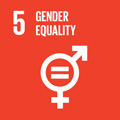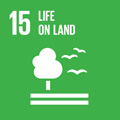- Docente: Paolo Savoia
- Credits: 6
- SSD: M-STO/05
- Language: Italian
- Teaching Mode: Traditional lectures
- Campus: Bologna
- Corso: Second cycle degree programme (LM) in Philosophical Sciences (cod. 8773)
Learning outcomes
The aim of this course is to provide the students the tools for analyzing historically the social, gendered, political, and cultural contexts of science and medicine. More specific aims include: the analysis of the relationship between scientific practices and popular cultures; the analysis of the relations between science and everyday life; the interpretation of scientific knowledge in light of the social and cultural contexts of its actors; the development of bibliographical and archival research skills.
Course contents
CLUES, DETAILS, OBJECTIVITY: ISSUES OF METHOD BETWEEN THE SCIENCES AND HISTORY
This course analyzes some cognitive categories that circulated between the sciences and historiography in the 20th century. Such cognitive categories are tools that organize historical narratives (who are the actors of history? when a historical period starts and ends? which sides must be placed on the forefront and in the background?). We will focus on analogies and exchanges connecting historical and scientific methods, with special reference to three main topics. The first one concerns the relationships between knowledge of the past and knowledge of nature; the second ways of knowing through clues and details with special reference to psychoanalysis, medicine and the human sciences; the third the relationships between objectivity and gender. The course traces interdisciplinary paths that connect – and create tensions among – the history of science, gender history, social history, and cultural history.
Classes will begin on January 30, 2023: Monday 11-13 (Aula A, via Centotrecento); Thursday 17-19 (aula I, via Zamboni 38); Friday 15-17 (aula A, via Centotrecento).
Readings/Bibliography
Part 1
a) Sciences and historical method
– Marc Bloch, Apologia della storia (Einaudi, 2009) [Introduzione e capitolo 1]
– Niels Bohr, "La teoria atomica e i principi fondamentali della descrizione della natura" in Id., I quanti e la vita (Bollati Boringhieri, 2012) [pp. 11-24]
b) Clues and details
– Carlo Ginzburg, "Spie. Radici di un paradigma indiziario" e "Freud, l'uomo dei lupi e i lupi mannari" in Id., Miti Emblemi Spie (Einaudi, 2000) [pp. 158-210 e pp. 239-249]
– Sigmund Freud, L'uomo dei lupi. Casi clinici/7 (Bollati Boringhieri, 1977) [sezioni 1, 2 e 4; poi le pp. 54-58, 63-66, 103-104, 125-128]
c) Gender and objectivity
– Joan Scott, "Il genere: un'utile categoria di analisi storica" in Id., Genere, politica, storia (Viella, 2013) [pp. 31-66]
– Donna Haraway, "Saperi situati. La questione della scienza nel femminismo e il privilegio di una prospettiva parziale" in Id., Manifesto Cyborg (Feltrinelli, 2018) [pp. 103-134]
Parte 2
[the list is partial and provisional, it can be expanded]
- Siegfried Kracauer, Prima delle cose ultime (Marietti, 1985)
- Ludwik Fleck, Genesi e sviluppo di un fatto scientifico: per una teoria dello stile e del collettivo di pensiero (il Mulino, 1983)
- Edgar Zilsel, The social origins of modern science (Kluwer, 2000)
- Sandra Harding, The Science Question in Feminism (Cornell, 1986)
- John Forrester, "If p, then what? Thinking in cases", History of the Human Sciences (1996) 9(3): 1-25
- Lorraine Daston, and Peter Galison, “The Image of Objectivity”, Representations (1992) no. 40: 81–128
- Carolyn Merchant, La morte della natura: donne, ecologia e rivoluzione scientifica (Bibiografica, 2022)
– Michel Foucault, Nietzsche, la genealogia, la storia, in Id. Il discorso, la storia, la verità : interventi 1969-1984 (Einaudi, 2001)
– Evelyn Fox Keller, Sul genere e la scienza (Garzanti, 1995)
– Bonnie G. Smith, “Gender and the Practices of Scientific History: The Seminar and Archival Research in the Nineteenth Century”, The American Historical Review 100, 4 (1995): 1150–76
– Fernand Braudel, Scritti sulla storia (Bompiani, 2003)
– Carlo Ginzburg, Il filo e le tracce. Vero falso finto (Feltrinelli, 2006)
– Hayden White, "Prefazione", in Id., Metahistory. Retorica e storia (Meltemi, 2019), pp. 39-100
Teaching methods
Lectures.
Texts and primary sources that will be discussed in class will be added to the bibliography for those interested in them. To encourage class participation, each lecture will be followed by a session of questions and comments.
The second part of the course will be devoted to students' presentations, individually or in group.
Assessment methods
Oral exam (on part 1) and in class presentation.
In the second part of the course students will choose one text to present in class with the help of slides, either individually or in group following common threads. This presentation is part of the evaluation.
Top marks (28-30) will be given to students who demonstrate a thorough knowledge of the material discussed in class and contained in the texts, critical and analytical skills, and the ability to express ideas and concepts clearly and cogently. Those students who will demonstrate a good knowledge of the material but tend to repeat it mechanically rather than demonstrate full understanding and the ability to build connections and present an argument will be rewarded with average to high marks (23-27). Students who demonstrate superficial knowledge, gaps in preparation, poor critical and analytical skills and difficulties of expression will receive average to low marks (18-22). Severe lacunae in one or more areas listed above could lead to the student repeating the exam.
Office hours
See the website of Paolo Savoia
SDGs


This teaching activity contributes to the achievement of the Sustainable Development Goals of the UN 2030 Agenda.
